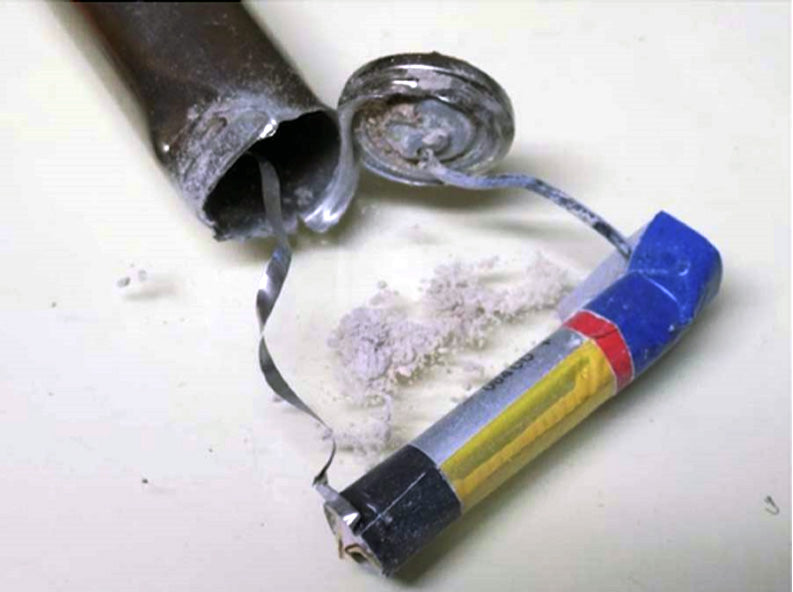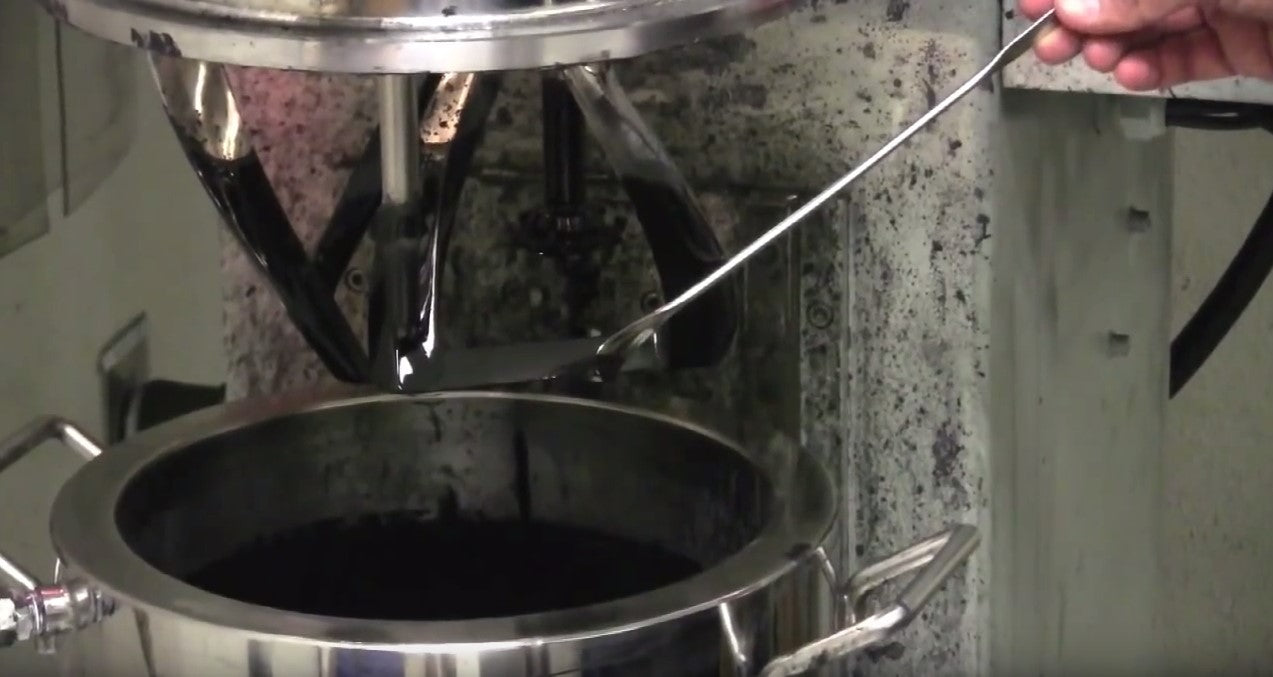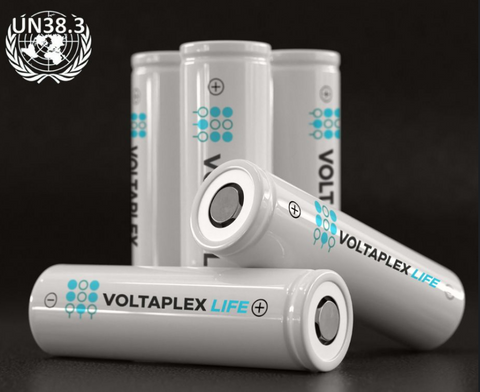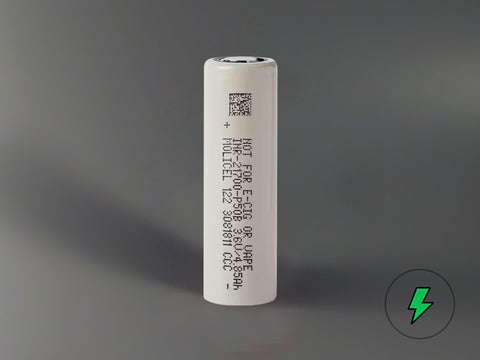BETTER KNOW YOUR BATTERY: Part One December 20 2014, 20 Comments
Why is it important to know how your batteries work? Because the world of lithium-ion batteries is rife with bullsh%t, that’s why. That’s the main reason we started Battery Bro - to deliver high-quality, wholesale li-ion batteries without the BS.
So we thought we’d give you a short write-up of all the tech terms you’ll see in battery tests and spec sheets. Comment away if there’s something we’ve missed.
The basics:
The most important measures of any electrical circuit are voltage, resistance, current, and power. There’s a very simple analogy to understand these. Think of a battery’s circuit as a pipe we’re trying to pump water through, like in the picture below (credit to kevinboone.net):

- Voltage is the water pressure that is pushing the water down through the pipe. Voltage is measured in volts.
- Resistance is the size of the lower pipe. If the pipe is wider, more water will flow through. When the pipe is smaller, there is more resistance. Resistance is measured in ohms or Ω.
- Current is how much water comes out of the pipe. Current is measured in amperes, amps or A. Sometimes it’s called I, and this is France’s fault.
If you know any two of these numbers, you can calculate the third. The math is super simple:

- Voltage = current x resistance
- Current = voltage / resistance
- Resistance = voltage / current
Another important concept is electrical power. This is simply voltage x current. Think back to the water analogy: you’re taking the voltage, or the water pressure, and multiplying it by the current, or how much water is actually coming out. This is a measure of how ‘hard’ the water is coming out of the pipe.
Why is this important? It tells us how much work we can actually do with the electricity.
Imagine you're trying to put out a fire with a firehose.
- If a lot of water comes out of the pipe but comes out slowly (no pressure), then you can't put out a fire.
- If the water comes out quickly but there's very little water, then you can't put out a fire.
- If the water comes out quickly (high voltage) AND there's a lot of water (high current), then you can put out a fire.
Electrical power is like the ability of your firehose to put out a fire.
Power is measured in Watts (W).
How to read a battery spec sheet
Let’s dive in to a real li-ion battery spec sheet:

First, let’s look at capacity. This is just a measure of how long you can use your battery. The number is in milliamp hours, or mAh. (There are 1,000 milliamps to one amp.) Amps is a measure of current, so we know we’re dealing with how much ‘water’ is coming out of the pipe. If your battery has 1 amp hour, that means it can discharge 1 ampere of current over one hour, or half an ampere an hour for two hours, etc.
This battery is rated at 3,200 mAh, meaning that in one hour, it can discharge 3,200 milliamps (3.2 amps) and then it’s done. That also means that if you want to do half that (1.6 amps) in an hour, then you would get two hours of power until the battery’s charge is depleted.
Batteries operate under a rule known as Peukert's Law. Simply put, the more current you draw from your battery, the less mAh you'll be able to get out of it.
That's why you should always look at the discharge current they quote in the Notes section. They obtained this number by discharging the battery at 0.65A discharge current. This means to get the figure of 3.2 amp hours, they discharged the battery at 0.65A for 3.2 / 0.65 = 4.92 hours. In reality, batteries can have different mAh ratings depending on how big the discharge current is. The mAh capacities are never exact.
Don't worry too much about the difference between rated and nominal figures. Much more important is the discharge current and temperature they used to get those figures.
Next up is nominal voltage. This is an important number. You don’t want your device to exceed that voltage when discharging. Most devices will have their voltage ratings printed prominently on the label or in the instruction manual.
Batteries are usually charged at a higher voltage than they’re discharged, as you can see in the charging voltage figure. Check your battery charger to make sure you don’t exceed this figure.
Continuous discharging current Max is an important figure for anybody who pushes their devices to the max, especially vapers. As the wording implies, this is the maximum discharge current in amps… to a point. Even if it says the maximum current can be sustained continuously, in practice it’s better to stay on the safe side with a slightly lower discharge current.
Finally, we have the internal resistance of the battery. This will always be expressed in Ω, or ohms. A battery’s internal resistance increases over its lifetime, so that by the time a battery is dead it will have a very high internal resistance. A battery with a lower internal resistance will, generally, be able to sustain higher Amp (current) loads.
Coming soon, Part Two… battery testing, alternative chemistries, and more battery geekery!










Comments
J. Colon on August 17 2020 at 11:42AM
I have a solar powered light with a
dhm 18650 3.7V 2000mah 4.7 WH battery specification listed on it. I can find many choices with the first 2 specs, but what does WH equate to? What should I look for to find the replacement?
Daniel Claverie on August 17 2020 at 11:40AM
Hi, i’m looking for a ltium ion battery model SZXH cell type 18650-2200 6.6Ah@10hr-rate
Anybody can help me finding it?
Thanks,
Daniel
www.tiempoaltiempo.com.uy
Uruguay
brutally.honest on August 17 2020 at 11:35AM
Chris,
The energy is the answer.
80V x 2Ah = 160 Wh
56V x 5Ah = 280 Wh
That was the easy part.
The second one has more energy in.
But which one will last longer?
You can’t tell without knowing more.
If the first one uses 100W motor it will work ~ 90 minutes
If the second uses 300W motor it will be flat dead in less than an hour.
Which car goes further – the one with 40 or 500 liter tank?
You can’t tell without knowing it’s consumption.
brutally.honest on August 17 2020 at 11:35AM
Everybody.
Again..
There is NO SUCH THING (yet) as 18650 cell with 9900mAh capacity!
Just count with me – 32g weight fully charged to 4,25V and 9,9Ah – that would be almost the energy density per gram that a NUKE has!!!
Or in other words – take some petrol car battery. 12V, 40Ah (or 40000mAh if you want).
So a dozen of those super-18650-monsters would have same energy inside?
Sure it will… that’s why all cars use them, or don’t they?
I guess that’s what Terminator T800 was powered by back in his days, ha ha ha…
I’m still waiting for 100000mAh cells to appear on ebay.
===
+ one more thing to explain:
The current (Amps) is usually a maximum the cell is designed to be used under normal conditions.
It does not mean a bulb, motor or any other device connected to the cell has to use that in full.
Then there is a short-time maximum – i.e. when the DC motor goes from zero rpm it takes massive amount of energy but once it’s spinning, the current drops.
So – you cannot blow a torch with a cell that has
- larger capacity – it will just last longer
- larger max current – it just might be safer as it will less likely overheat after some time
But your device can easily catch fire or explode with the cells that do not meet safety standards, have lower max current than the device is designed for (sub ohm mods omg!), are overcharged by crappy chargers or over-discharged in crappy torches with no protection circuits whatsoever, use low quality materials, different voltage, etc etc etc.
Please, think twice.
All the best.
Chris Townend on September 20 2019 at 02:16AM
Hi
I get confused by all these specs. Simply, I wish to buy a cordless electric mower. I have narrowed my choice down to two offerings. My decision comes down to the Li-Ion battery in each:
Option 1 – Battery is 80V DC and 2.0Ah
Option 2 – Battery is 56V DC and 5.0Ah
Is this enough information to make an informed decision on the longest running time of the mower – all things being equal?
Any guidance would be appreciated.
Chris
Mobile 0421 055 398
MLO on July 05 2019 at 02:59AM
What is the optimal voltage a 18650 battery should be when it’s first shipped? I ask because I bought 4 Samsung 30Q button top batteries and all 4 arrived at 3.45 volts. That seems really low to me as I thought storage voltage should have been 3.7 – 3.8 volts. That’s got me worried that I either got some fakes or really old batteries.
DJ on June 01 2019 at 05:41AM
Subject: 18650 li-ion rechargeables.
I have doorbell cameras coming in the mail & they require these batteries. I have no idea of the cameras discharge rate. I purchased 9800 mah batts for the camera. I also had 4000 & 6000 mah prior for my cree flashlights. Which of these would be best suited for this camera. Thank you for taking the time to answer, I really do appreciate it
DJ on June 01 2019 at 05:41AM
Subject: 18650 li-ion rechargeables.
I have doorbell cameras coming in the mail & they require these batteries. I have no idea of the cameras discharge rate. I purchased 9800 mah batts for the camera. I also had 4000 & 6000 mah prior for my cree flashlights. Which of these would be the best for this camera
kang youngtae on June 01 2019 at 05:43AM
What do amps actually mean in relation to an 18650 cell? Voltage 3.7 understood. mAh 2500 understood. Amp 10? 20? 30?amp.
Ebike battery 48v 12.5 amp – 48v 20amp. What does the amp difference mean?
Thanks in advance,
12.5amp(false) => 12.5Ah(true)
20amp(false) => 20Ah(true) maybe you can understand this meaning!
Mayer on June 01 2019 at 05:43AM
did anybody check a battery 18650 6AH or 9.8AH ?
i connect the battery to 5 ohm res. and check the voltage till it drop to 2.5 V
i have got 2.2 AH (6 AH) and 3.4 AH (9.8 AH)
lousy Chines battery ???
Michael glenn Ferguson on June 01 2019 at 05:44AM
I have a LED dive light that came with a single 18650 3.7v 2200mAh which gives me about 3-4 hours of burn time. I am trying to understand if I can buy a battery that will give me longer burn time without blowing the bulb or the wiring completely??
thanks of anyone can answer this for me.
rafael a ramirez on October 16 2018 at 05:07AM
Can i use 1609 batteries to create a powerwall?
I have modules of 6v add it to 24 /2500 mAh
IT is possible?
thanks
Prof. Dom on October 16 2018 at 05:07AM
Battery A, 2000mAh at 30A
Battery B, 3000mAh at 20A
Which is more is indeed a relevant question, being which battery can provide more current.
In this case, battery A cannot hold as much charge, but it can provide MORE current, in particular, 30A of current. Battery B can provide less current, i.e. 20A of current.
This is ultimately a factor of the purity and materials of which a battery is constructed. Some batteries have more internal resistance, and some have less. Voltage, current and resistance are all related by Ohm’s law, which states,
V=I*R,
where V is voltage, I is current and R is resistance. Since all these batteries essentially have the same voltage, this shows us that the current goes up as resistance goes down, and vice versa.
As mentioned in the article, Peukert’s law governs the discharge rate of batteries, and in that law you will also find I, the discharge current of the batteries. So one battery can indeed have a greater discharge current then another.
That does not mean that when you put the battery into your flashlight or vaporizer that it will be blasting out 30A of current. That’s actually quite a bit of current, and your whole battery would be discharged in a matter of minutes. It just means that the battery has the capacity to provide that much current if such a draw on the battery exists.
It’s also acceptable to consider a battery with a greater capacity as having more in the sense that capacity is potential (stored) energy. So Battery B has more energy stored in it than Battery A
To conclude, Battery A has a smaller capacity and can provide a greater discharge current, and Battery B has a greater capacity but can provide a smaller discharge current.
Clint Richardson on September 07 2018 at 08:25AM
Will these work fine in a vaporizer mod or am I missing a key piece of information?
3.7V 18650 9800mAh Li-ion Rechargeable Battery For Flashlight Torch LED
https://www.ebay.com/itm/10-X-3-7V-18650-9800mAh-Li-ion-Rechargeable-Battery-For-Flashlight-Torch-LED/183176775029?trkparms=aid%3D222007%26algo%3DSIM.MBE%26ao%3D2%26asc%3D53210%26meid%3D597f3945f5204754b7c52163523b459f%26pid%3D100005%26rk%3D5%26rkt%3D12%26mehot%3Dpp%26sd%3D182528556414%26itm%3D183176775029&trksid=p2047675.c100005.m1851
Les on June 28 2018 at 12:32PM
What do amps actually mean in relation to an 18650 cell? Voltage 3.7 understood. mAh 2500 understood. Amp 10? 20? 30?amp.
Ebike battery 48v 12.5 amp – 48v 20amp. What does the amp difference mean?
Thanks in advance,
Les.
Xωρίς Όνομα on January 13 2018 at 01:07PM
Battery A, 2000mAh at 30A
Battery B, 3000mAh at 20A
This is a no-brainer question:
First of all there’s no such thing as “which is more”. To properly ask this question you should have said: “Which battery will last longer?” Then all you have to do is ask yourself what will last longer, i) a smaller capacity battery at a higher current draw (battery A) or ii) a higher capacity battery at a lower current draw (battery B).
I hope you don’t expect me to answer this for you, so go do your homework and think before you ask silly questions!
Brian packer on December 06 2017 at 04:58AM
You didn’t answer my initial question: Which is more?
Battery A, 2000mAh at 30A
Battery B, 3000mAh at 20A
I understand I want more current for a vape than a flashlight.
But if I want the battery for a flashlight, which is more?
Henry Moore on September 18 2017 at 11:54PM
I have been making Lithium Ion Pack for two years now. I use balancing circuits to manage my Cell Stacks.
Did you know???
1. The weight of a Lithium Ion Cell is the best indicator. Ultra Fire Cells are 17 grams lighter than EBL Cells. This is because they are Failed AA Lithium Cells ( Commercial Failure ) in a Fake EBL Looking Package.
2. Most all Fake 18650 Cells have no Safety Vent on the Button. BOOM !!!
Both these facts were provided to EBL and Verified.
Jim Zab on December 24 2016 at 06:26PM
What is the longest lasting 18650 battery as far as charge cycles. Thanks.
George on June 05 2016 at 04:14AM
So to clarify a bit on the discharge current, can this setting be used to check actual capacity of the battery when testing ?